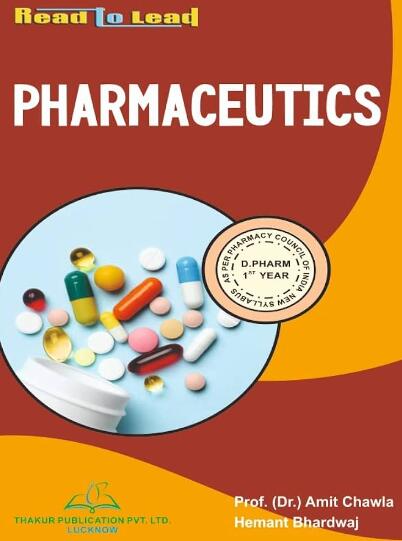艾滋病毒、胰腺癌和 A/B 型血友病药物输送的生物障碍及创新治疗方法的开发
IF 4.9
3区 医学
Q1 PHARMACOLOGY & PHARMACY
引用次数: 0
摘要
生物障碍仍然是开发创新疗法的主要障碍。根据疾病的病理生理学、所涉及的组织、细胞群和细胞成分,药物通常需要克服多个生物屏障才能到达靶细胞,并在特定细胞区产生疗效。人体生物屏障种类繁多,包括多层保护和阻挡。重要的是,生物屏障不仅存在于器官/组织层面,还包括细胞结构,如外质膜、溶酶体内机制和核膜。如今,临床医生可以使用的治疗药物种类繁多,从化学合成的小分子、生物制剂(包括重组蛋白,如单克隆抗体和激素)、核酸类治疗药物、抗体-药物共轭物(ADC)到现代病毒载体介导的基因疗法,不一而足。近十年来,治疗领域日新月异,涌现出众多创新治疗方法。2018 年,美国食品药品管理局批准了帕替西兰(patisiran),为小干扰 RNA(siRNA)成为一类新型的核酸类疗法铺平了道路,这种疗法在将药物有效递送到靶细胞后,可以优雅地调节转录后基因的表达。最近,valoctocogene roxaparvovec 和 etranacogene dezaparvovec 分别被批准用于治疗 A 型和 B 型血友病,这标志着基于病毒载体的基因疗法取得了突破性进展,成为治疗疾病的新工具。包括基于 mRNA 的癌症疫苗和外泌体靶向疗法在内的多种高度创新的药物和给药方法即将进入市场,并将改变多种疾病的治疗格局。在这篇综述中,我们将深入探讨三种不同的疾病实体,它们在临床、科学和社会经济方面都具有重大影响,并催生了许多技术进步:作为主要传染病的获得性免疫缺陷综合征(艾滋病)、作为最致命的实体癌之一的胰腺癌以及作为遗传性疾病的血友病 A/B。我们的首要目标是强调在不同疾病领域中可以发现的生物障碍的总体原则。我们的第二个目标是展示哪些旨在跨越特定疾病生物障碍的治疗方法在有效治疗疾病方面大有可为。在这方面,我们将举例说明正确选择药物类别和给药载体、给药方式以及治疗靶点如何有助于克服各种生物障碍,从而预防、治疗和治愈疾病。本文章由计算机程序翻译,如有差异,请以英文原文为准。
Biological Barriers for Drug Delivery and Development of Innovative Therapeutic Approaches in HIV, Pancreatic Cancer, and Hemophilia A/B
Biological barriers remain a major obstacle for the development of innovative therapeutics. Depending on a disease’s pathophysiology, the involved tissues, cell populations, and cellular components, drugs often have to overcome several biological barriers to reach their target cells and become effective in a specific cellular compartment. Human biological barriers are incredibly diverse and include multiple layers of protection and obstruction. Importantly, biological barriers are not only found at the organ/tissue level, but also include cellular structures such as the outer plasma membrane, the endolysosomal machinery, and the nuclear envelope. Nowadays, clinicians have access to a broad arsenal of therapeutics ranging from chemically synthesized small molecules, biologicals including recombinant proteins (such as monoclonal antibodies and hormones), nucleic-acid-based therapeutics, and antibody-drug conjugates (ADCs), to modern viral-vector-mediated gene therapy. In the past decade, the therapeutic landscape has been changing rapidly, giving rise to a multitude of innovative therapy approaches. In 2018, the FDA approval of patisiran paved the way for small interfering RNAs (siRNAs) to become a novel class of nucleic-acid-based therapeutics, which—upon effective drug delivery to their target cells—allow to elegantly regulate the post-transcriptional gene expression. The recent approvals of valoctocogene roxaparvovec and etranacogene dezaparvovec for the treatment of hemophilia A and B, respectively, mark the breakthrough of viral-vector-based gene therapy as a new tool to cure disease. A multitude of highly innovative medicines and drug delivery methods including mRNA-based cancer vaccines and exosome-targeted therapy is on the verge of entering the market and changing the treatment landscape for a broad range of conditions. In this review, we provide insights into three different disease entities, which are clinically, scientifically, and socioeconomically impactful and have given rise to many technological advancements: acquired immunodeficiency syndrome (AIDS) as a predominant infectious disease, pancreatic carcinoma as one of the most lethal solid cancers, and hemophilia A/B as a hereditary genetic disorder. Our primary objective is to highlight the overarching principles of biological barriers that can be identified across different disease areas. Our second goal is to showcase which therapeutic approaches designed to cross disease-specific biological barriers have been promising in effectively treating disease. In this context, we will exemplify how the right selection of the drug category and delivery vehicle, mode of administration, and therapeutic target(s) can help overcome various biological barriers to prevent, treat, and cure disease.
求助全文
通过发布文献求助,成功后即可免费获取论文全文。
去求助
来源期刊

Pharmaceutics
Pharmacology, Toxicology and Pharmaceutics-Pharmaceutical Science
CiteScore
7.90
自引率
11.10%
发文量
2379
审稿时长
16.41 days
期刊介绍:
Pharmaceutics (ISSN 1999-4923) is an open access journal which provides an advanced forum for the science and technology of pharmaceutics and biopharmaceutics. It publishes reviews, regular research papers, communications, and short notes. Covered topics include pharmacokinetics, toxicokinetics, pharmacodynamics, pharmacogenetics and pharmacogenomics, and pharmaceutical formulation. Our aim is to encourage scientists to publish their experimental and theoretical details in as much detail as possible. There is no restriction on the length of the papers. The full experimental details must be provided so that the results can be reproduced.
 求助内容:
求助内容: 应助结果提醒方式:
应助结果提醒方式:


